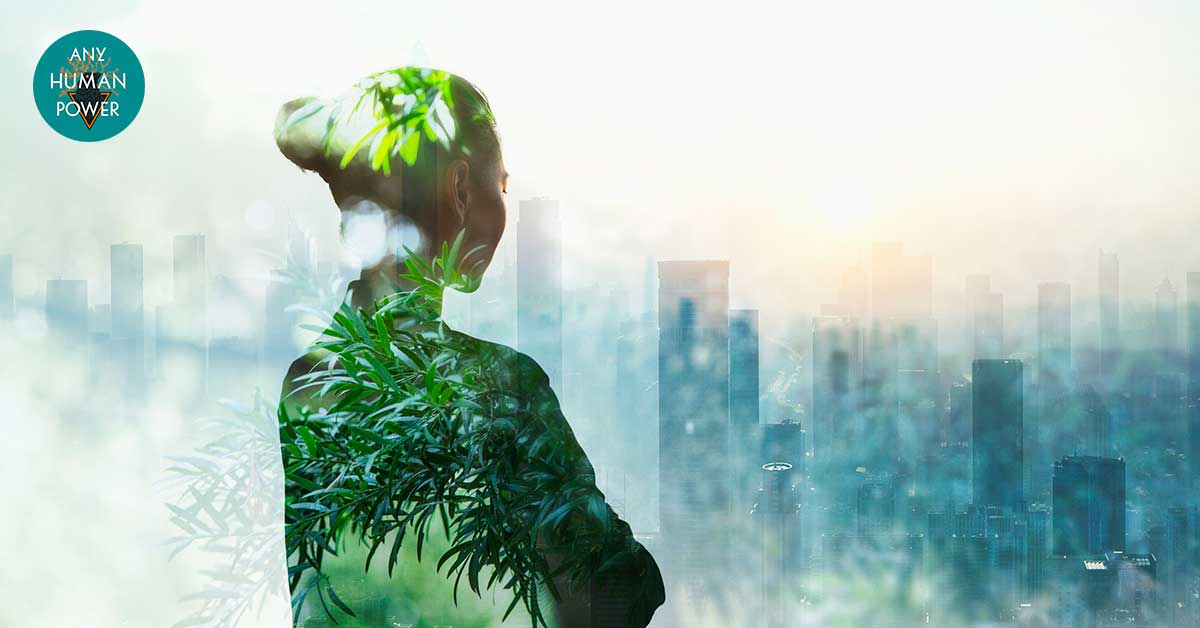THOUGHTS | DREAMS | ACTION

THOUGHTS | DREAMS | ACTION

The Future is Already Here
The Future is already here…
…it’s just (very) unevenly distributed.
So said William Gibson, author of Neuromancer (well worth a read), and, while I haven’t found any sign that he was considering the Meta-Crisis back in 1983 when he first said this, he could have been. Certainly the entirety of Any Human Power (and the Accidental Gods podcast which fed into it) is based on this premise: that there are countless brilliant, highly motivated people coming up with brilliant, workable ideas that can bridge us at least to the emergent edge of what Indy Johar calls ‘Inter-becoming’ where we are putting into action all the things we know are the best of ourselves, and what happens then is unknowable, but watching it happen will be one of the most exciting things imaginable.
This, after all, was the challenge of the book. The visions on the hill gave me a frame— Lan dies having made a promise to her grandson and then has to work out how she can keep it when the dead have limited agency in the lands of the living —but beyond this, the instruction was to weave into being a fictional world that could happen, something totally plausible, grounded in things that are around today, but pulling them together into a thriller arc where the actions have clear guiding drives behind them.
Like the Boudica books where (at least for the first one) I had a rule that all the dreaming had to be something I’d either done or seen done, Any Human Power has a rule that any technology or social/cultural/political shift that I suggest has to be possible without any tweaks to the technology, and, ideally has to have been proposed by someone else a lot smarter than me. What I bring to the table is the capacity to weave it all together into one coherent narrative and give it the drive that carries us forward and opens the doors of possibility.
Possible Places, Futures that Work in the Present
Gathering ideas for this kind of thing is not a one-time process. Unlike most historical research, where, absent a sudden archaeological find, or a new science, like DNA sequencing, everything has happened and it’s just a question of fitting it together, working out ways forward is an ever-evolving process. There are some obvious pointers, though, and people behind them. Audrey Tang, the world’s youngest digital minister, and a genius who combines leading edge technology with leading edge social and democratic thinking, has been a lodestar for the possible when it comes to creating a genuinely democratic structure. The ‘forking’ of the Taiwanese government and its subsequent capacity to fend off the predations of the Chinese by harnessing AI and intelligent social media to bring people together and to effectively crowd-source new democratic ideas is ground-breaking and inspiring in equal measure.
Similarly, the thinking behind Riversimple’s Future Guardian Governance model of business is completely transformative. In this model, shareholders hold one seat on a board of six, and the other five seats are held by: the workers, the customers, the supply chain, the environment and the local community. Already, this is changing the way Riversimple and its supplying companies do business. I genuinely believe that if every company in the world took this on tomorrow, we’d have the beginnings of genuine change (they’d have to be doing it for real, not green-washing, and some of them would voluntarily put themselves out of business at the first meeting, but this has to happen anyway, so the sooner it does, the better). In the book, the #Changemakers add in a seventh seat for Future Generations, but I don’t see this being an impediment to change, and it’s based on the Welsh Government’s ‘Future Generations Commissioner’ so it’s not wholly my idea and, again, it is already working within the current system.
Tech that unites
One of the key ideas in the book is that our current technology doesn’t have to divide us in the way it does just now. If we harness our social media in service of driving profits ever higher, then the only way to do this is the ‘race to the bottom of the brainstem’ so neatly described by Tristan Harris. Jonathan Haidt years ago showed that triggering our limbic systems to outrage gives us dopamine hits of a magnitude on a par with snorting cocaine, so if our social media companies keep on stoking division, they keep us addicted, occupied and they can harvest our time and attention in service to selling us more stuff we don’t want to impress people who don’t care while desperately trying to heal the wounds of our separation which the social media are making worse.
It doesn’t take much thought to see that this is a self-perpetuating cycle that’s going to end up in social catastrophe and we have to get off the hamster wheel of limbic hijack asap.
But social media don’t have to be all bad – yet again, Audrey Tang is showing how changing the internal algorithms can create social media that are (imagine!) actually pro-social, where people are offered value for building bridges instead of piling onto the dog-fight and where the best-built bridges are distributed most widely, acting as incentives for other people to do better. This is also a self-reinforcing cycle, but it’s one that works to bring people together. With this on its doorstep, it’s perhaps not surprising that the People’s Republic of China wants to annexe Taiwan – but it’s equally clear that they’ll have to think a lot smarter than one of the smartest people on the planet if they’re going to succeed.
And the grand, beautiful thing about this, is that I don’t have to be this smart to be able to create characters who are – if they can code for connection the way Audrey Tang does, and solve for democracy the way Daniel Schmachtenberger does in the Consilience Project, and break out ideas like the person-hood of buildings like Indy Johar and his colleagues in the Dark Matter Labs… then we’re already a good way towards a future we’d be proud to leave to the generations that come after us. What more could we ask for?
FOR THOUGHTS, DREAMS & DARING DEEDS, JOIN MANDA'S LIST
SAY HELLO ON SOCIAL MEDIA
You may also like…
Visions of Life beyond Death
Writing a novel from the perspective of someone who dies at the end of the first chapter (truly, this isn’t a spoiler) was always going to be…interesting. But it was part of the vision from the hill and if I’ve learned anything in forty years of shamanic practice, it’s that not all visions come in clear text, and when they do, messing with them in any way is a seriously bad idea.
Manda's new novel: ways to a future we'd be proud to leave behind
I genuinely believed I’d stopped writing novels. I’d become a podcaster instead, a smallholder, a holder-of-courses where people could learn in real time the things that might yet still turn us away from the multi-polar cliff edge to which our dysfunctional culture is hurtling us with such terrifying speed. But…



